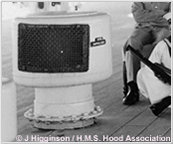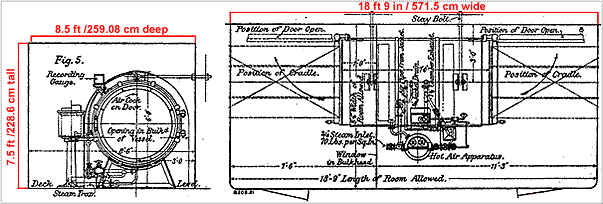Crew Numbers
The size of Hood's crew varied notably between peacetime and wartime. The average peacetime crew was roughly 1,200 officers and ratings. On occasion, a higher number may have been required for special cruises/duties. During wartime, the number of crew increased to 1,400+.
The following figures are based on Hood's final complement of 1,418 men on 24 May 1941:
Royal Navy: 89 officers and @1157 ratings/enlisted men
Royal Marines: @4 officers and @161 men
NAAFI: @ 7 civilian men
Note: These figures include reserve officers and ratings as well as men from other navies/countries (France, Canada, India, Australia, Poland, South Africa, St Helena, etc etc.). At the time of her loss, a number of crewmen were ashore (leave, hospital, training, deserters, etc.). Some temporary replacement men were aboard, but not necessarily enough to cover the missing men. Research indicates that the actual number of crew carried tended to fluctuate due to various personnel issues (such as those mentioned above). Hood's officially allocated wartime crew complement can be viewed here.
Click HERE to learn more about the crew
Accommodation
 Hood featured larger-than-usual "messdecks" for ratings to eat and sleep in. Officers had cabins in the after part of the ship (mainly beneath the area of the After Concentrating Position and further aft There were various messes for different ranks or departments. Naturally, the Captain had a very large living space as did the commanding Admiral. There were also ample numbers of water closets, urinals, washing-up spaces and baths throughout the ship.
Hood featured larger-than-usual "messdecks" for ratings to eat and sleep in. Officers had cabins in the after part of the ship (mainly beneath the area of the After Concentrating Position and further aft There were various messes for different ranks or departments. Naturally, the Captain had a very large living space as did the commanding Admiral. There were also ample numbers of water closets, urinals, washing-up spaces and baths throughout the ship.
Hood's cooking plant consisted of four small oil-fired ranges in the officers' galleys. The main crew's galley was equipped with three hotplate ranges, one fat-frying range, three hot closets, two wet steam cookers, two 90 gallon boiling kettles, two 120 gallon boiling kettles and two hot water tanks. Some equipment was oil-fired whereas some was steam heated from the main boilers. Combined, both galleys could provide food for nearly 1,500 men. Hood was also equipped with a bakery. It was equipped with a double-decked steam tube oven capable of baking about 250 lbs of bread in a single batch.

Ventilation
Living spaces, the heads/waterclosets (toilets), washplaces, pantries, sculleries, stores, etc., were ventilated by electrically-driven exhaust fans leading directly to the open air and external vents. These consisted mostly of the "mushroom" shaped variety (examples of which can be seen in the photo to the right). In cold conditions, the air could be passed through steam-powered heaters.
According to many accounts, the ventilation was poor below decks. There are several known stories pertaining to tuberculosis and other respiratory diseases. We cannot currently verify of these claims.
Sanitation/Disposal
Hood was fitted with incinerators for the destruction of refuse when in port or drydock (when at sea, refuse was usually dumped overboard via the midships "gash chute"). Hood also featured a "Disinfector House" which was used by medical personnel to cleanse medical tools, bedding, clothing, etc.

Above- Profile (left) and plan (right) views of the Disinfector House as originally fitted. This structure was located immediately behind the second funnel.